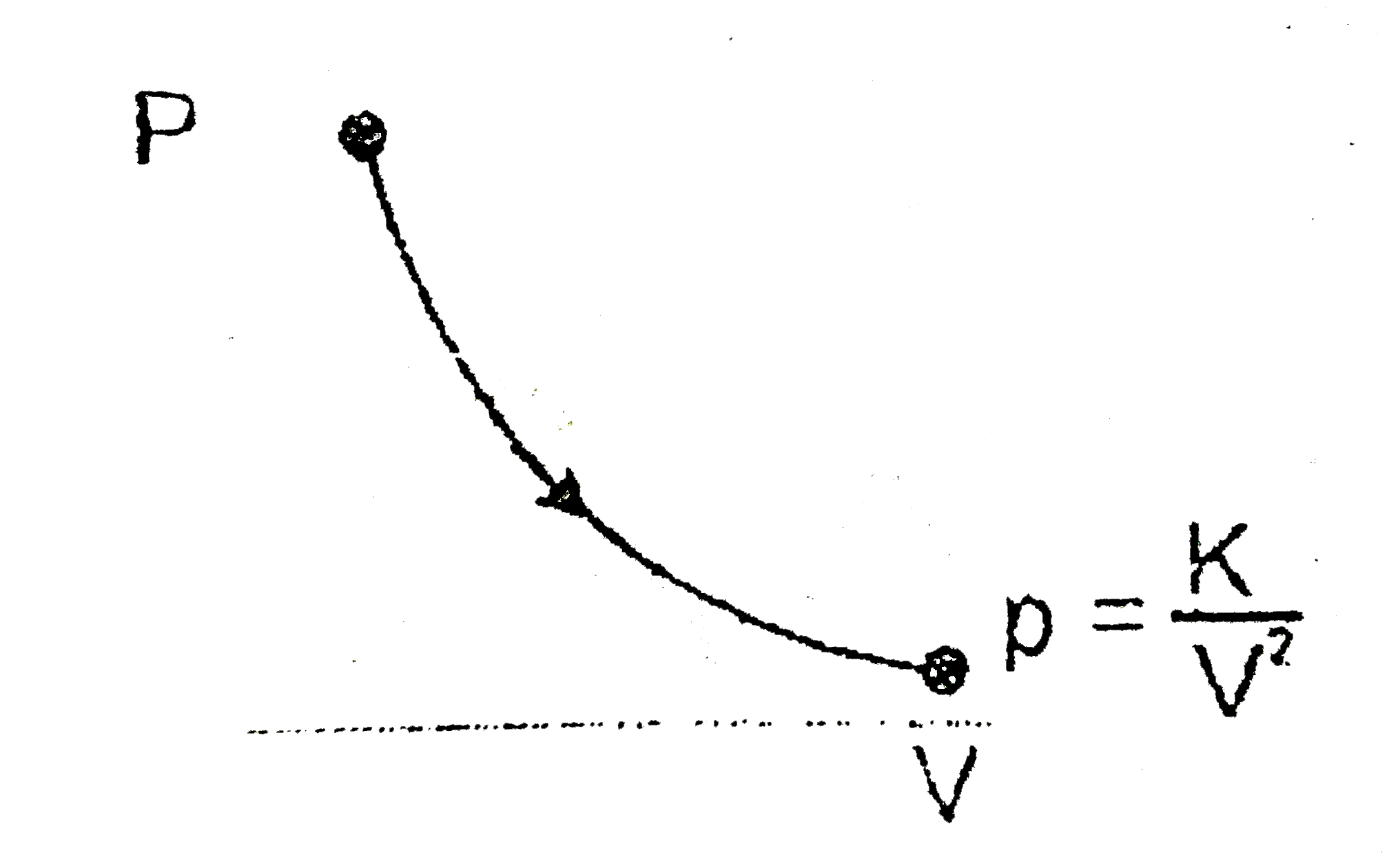An ideal diatomic gas with occupies a volume at a pressure . The gas undergoes a process in which the pressure is proportional to the volume. At the end of the process the rms speed of the gas molecules has doubled from its initial value.
The molar heat capacity of the gas in the given process is
3 R
The correct Answer is:A
To solve the problem, we need to determine the molar heat capacity of an ideal diatomic gas that undergoes a process where pressure is proportional to volume, and the root mean square (rms) speed of the gas molecules doubles from its initial value.
1. Understand the relationship between rms speed and temperature:
The rms speed vrms of gas molecules is given by the equation:
vrms=√3RTM
where R is the universal gas constant, T is the absolute temperature, and M is the molar mass of the gas.
2. Initial and final rms speeds:
Let the initial rms speed be vrms1 and the final rms speed be vrms2. According to the problem, vrms2=2vrms1.
3. Relate rms speed to temperature:
From the rms speed equation, we can write:
vrms1=√3RT1Mandvrms2=√3RT2M
Therefore, we have:
2vrms1=√3RT2M
Substituting vrms1:
2√3RT1M=√3RT2M
Squaring both sides gives:
43RT1M=3RT2M
Simplifying this results in:
4T1=T2⇒T2=4T1
4. Using the relationship between pressure and volume:
Given that pressure P is proportional to volume V, we can write:
P=kV(for some constant k)
Using the ideal gas law PV=nRT, we can express this as:
kV2=nRT
Since P∝V, we can substitute T1 and T2 into this equation:
kV21=nRT1andkV22=nRT2
Substituting T2=4T1:
kV22=nR(4T1)⇒V22=4nRT1k
Since V22=4V21, we can conclude that:
V2=2V1
5. Finding the molar heat capacity:
The molar heat capacity C in a process can be expressed as:
C=CV+R(ΔTΔT)
Since CV=5R2 for a diatomic gas, we need to find the heat capacity for the process where P∝V.
The relationship between heat capacities in this case can be derived from the first law of thermodynamics and the fact that:
C=CV+Rγ−1
where γ is the ratio of specific heats. For a diatomic gas, γ=CPCV=7R/25R/2=75.
Using this, we can find:
C=5R2+R⎛⎝175−1⎞⎠=5R2+R(52)=5R2+5R2=5R
Final Answer:
The molar heat capacity of the gas in the given process is 5R.
The rms speed vrms of gas molecules is given by the equation:
vrms=√3RTM
where R is the universal gas constant, T is the absolute temperature, and M is the molar mass of the gas.
Let the initial rms speed be vrms1 and the final rms speed be vrms2. According to the problem, vrms2=2vrms1.
From the rms speed equation, we can write:
vrms1=√3RT1Mandvrms2=√3RT2M
Therefore, we have:
2vrms1=√3RT2M
Substituting vrms1:
2√3RT1M=√3RT2M
Squaring both sides gives:
43RT1M=3RT2M
Simplifying this results in:
4T1=T2⇒T2=4T1
Given that pressure P is proportional to volume V, we can write:
P=kV(for some constant k)
Using the ideal gas law PV=nRT, we can express this as:
kV2=nRT
Since P∝V, we can substitute T1 and T2 into this equation:
kV21=nRT1andkV22=nRT2
Substituting T2=4T1:
kV22=nR(4T1)⇒V22=4nRT1k
Since V22=4V21, we can conclude that:
V2=2V1
The molar heat capacity C in a process can be expressed as:
C=CV+R(ΔTΔT)
Since CV=5R2 for a diatomic gas, we need to find the heat capacity for the process where P∝V.
C=CV+Rγ−1
where γ is the ratio of specific heats. For a diatomic gas, γ=CPCV=7R/25R/2=75.
C=5R2+R⎛⎝175−1⎞⎠=5R2+R(52)=5R2+5R2=5R
The molar heat capacity of the gas in the given process is 5R.
Topper's Solved these Questions
Similar Questions
An ideal diatomic gas with CV=5R2 occupies a volume V1 at a pressure P1. The gas undergoes a process in which the pressure is proportional to the volume. At the end of the process the rms speed of the gas molecules has doubled from its initial value.
Heat supplied to the gas in the given process is
View SolutionAn ideal diatomic gas with CV=5R2 occupies a volume (Vi at a pressure (Pi. The gas undergoes a process in which the pressure is proportional to the volume. At the end of the process, it is found that the rms speed of the gas molecules has doubles from its initial value. Determine the amount of energy transferred to the gas by heat.
View SolutionA gas undergoes a process in which its pressure P and volume V are related as VP = constant. The bulk modulus of gas for this process
View SolutionA gas undergoes a process in which its pressure P and volume V are related as VPn= constant. The bulk modulus of the gas in the process is:
View SolutionP-V diagram of a diatomic gas is a straight line passing through origin. The molar heat capacity of the gas in the process will be
View SolutionP-V diagram of a diatomic gas is a straight line passing through origin. The molar heat capacity of the gas in the process will be
View SolutionIn a process, the pressure of an ideal gas is proportional to square of the volume of the gas. If the temperature of the gas increases in this process, then work done by this gas
View Solutionan ideal diatomic gas undergoes a polytropic process described by the equation P√V=constant . The molar heat capacity of the gas during this process is
View SolutionIn a thermodynamic process on an ideal diatomic gas, work done by the gas is η times the heat supplied (η<1). The molar heat capacity of the gas for the process is
View SolutionThe molar heat capacity for the process shown in fig. is

View Solution
